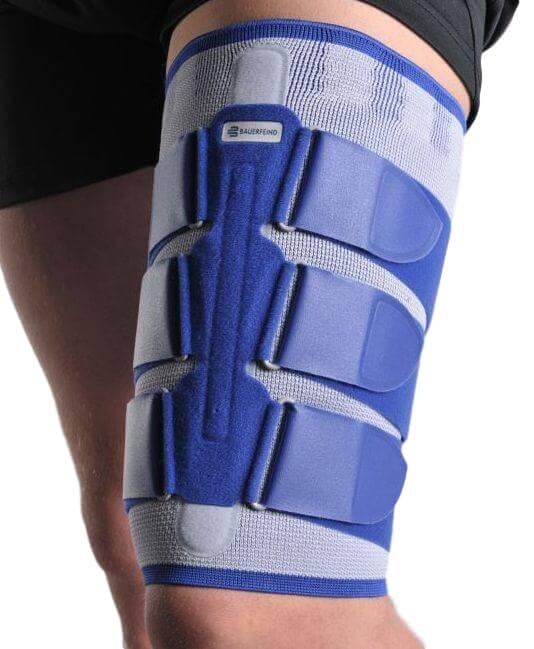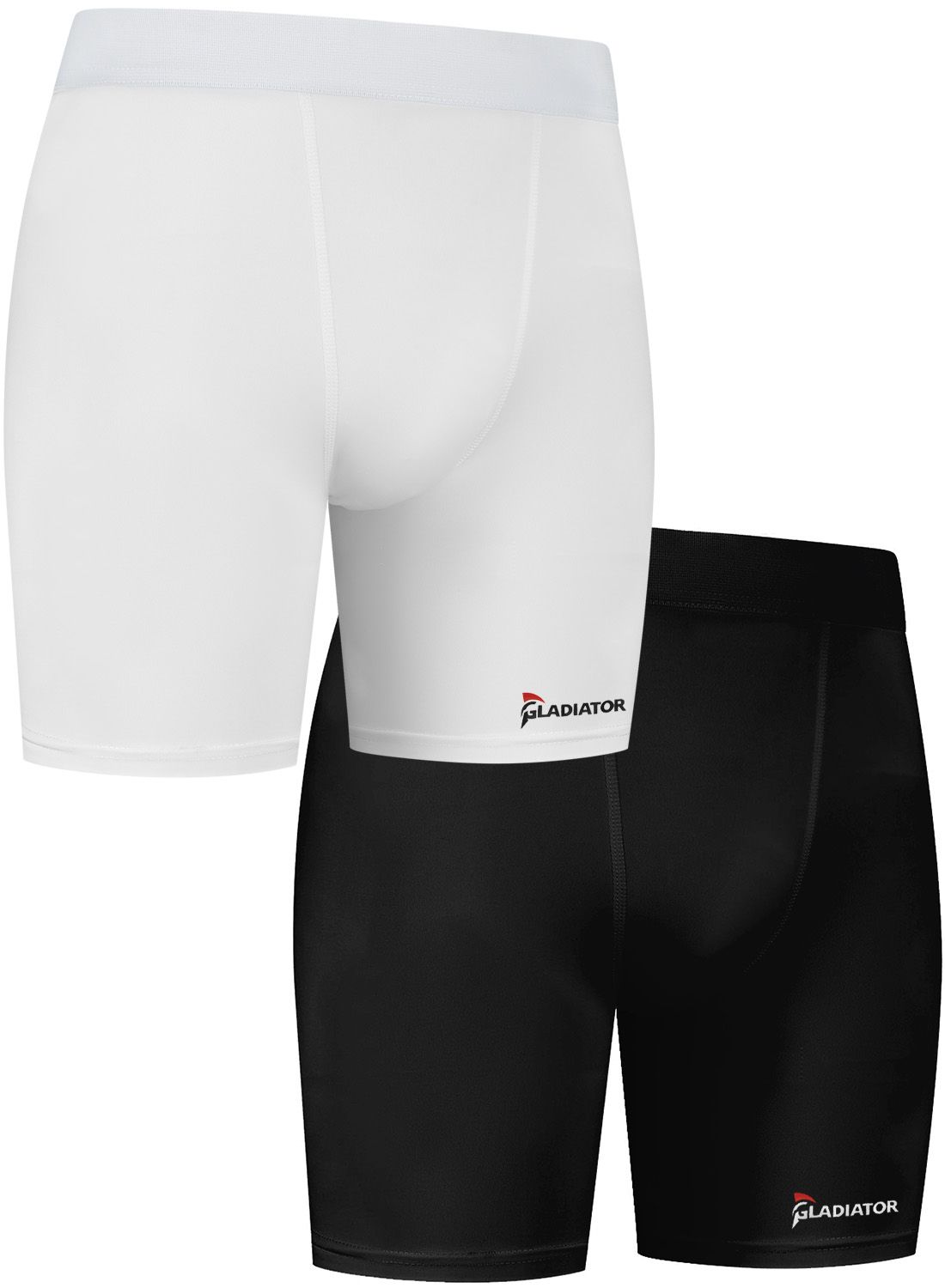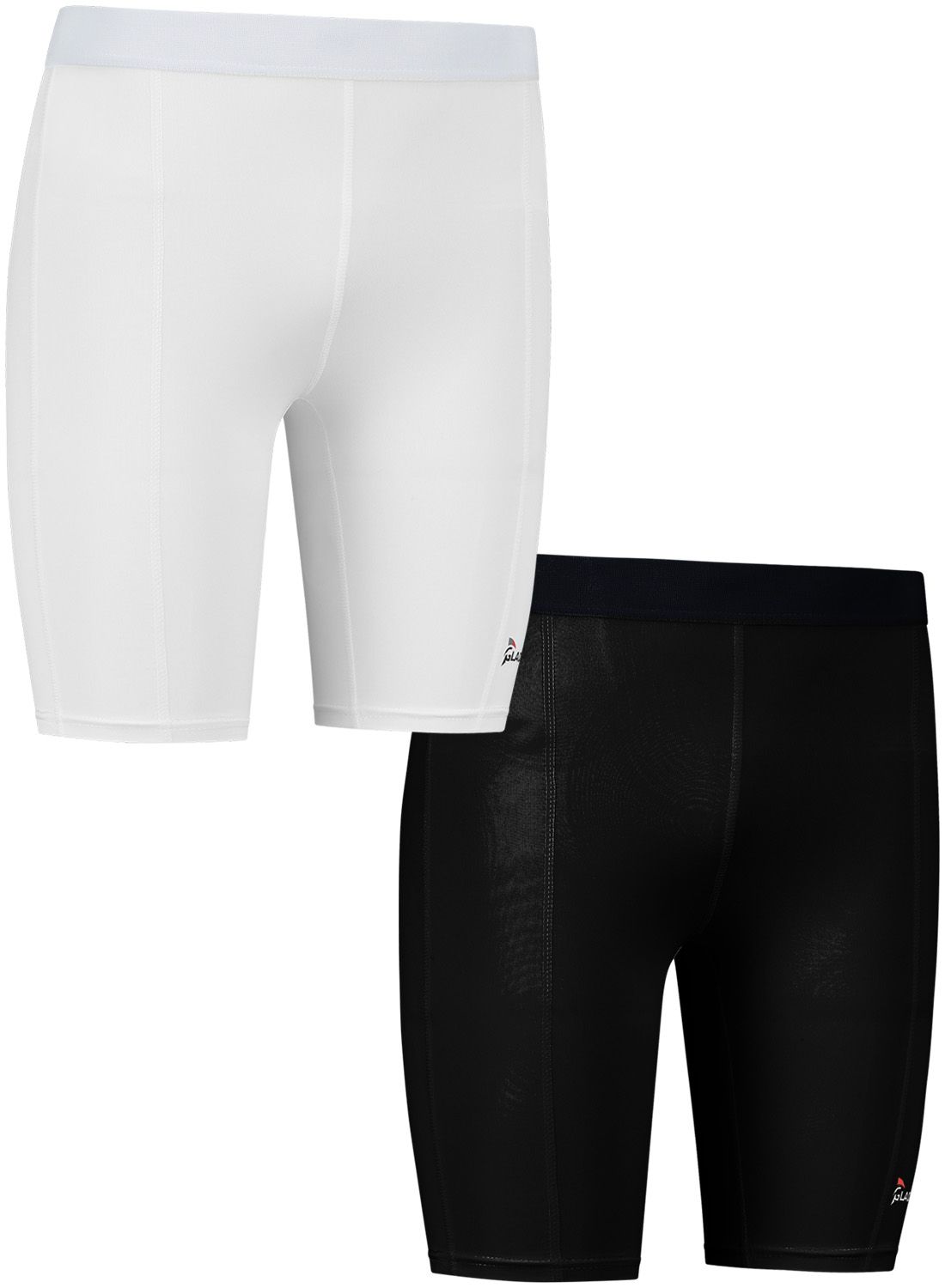Muscle Tear / Muscle Cramp
Muscles are bundles of contractible fibres that are arranged in the same way. The thousands of fibres are held together by connective tissue, and thus it forms a muscle.
Symptoms of a torn muscle in the upper leg
Less than 5% of the fibre is damaged in a first degree muscle tear. You only feel pain with explosive and maximum loading of the muscle. You will feel a sharp pain in the muscle, but there are still enough functional fibres for you to move your leg without any complaints. With a second-degree muscle tear it is different, where you feel pain during light loading of the leg. Stretching is painful and strength decreases. A third-degree muscle tear gives a severe pain with a snapping noise. The pain will go away, simply because the connection is broken, and your body cannot perceive it. Resulting in a big swelling with a big bruise. The muscle also bulges when tightening it. A third-degree muscle tear will have to be treated surgically. With a first and second degree muscle tear, a physiotherapist can help you sufficiently.
Treatment of a torn muscle in the upper leg
The best treatment after a muscle tear is rest. Compression products provide relief from swelling such as fluid and blood. You can also ice the swelling to reduce it, the only disadvantage of this is that the blood circulation will slow down. As soon as the pain is tolerable, you can stop icing. From the fourth day on, the muscle will have started to fix itself again, so you can tighten your muscle once more without moving. This is called an isometric contraction. In case of an injury to the upper leg, you can use a thigh brace for extra support. We, at Podobrace, can offer you a wide range of products that can help you with your injury, with several degrees of protection. The Bauerfeind Myotrain Thigh / Upper Leg Support and the LP Support Thigh Support provide the muscle with enough support to allow the muscle to heal sufficiently. This will give you the highest comfort and is a perfect replacement for tape bandage. In the first week, you should not have your leg massaged. From the fourth week on, it is possible to start running again. From the seventh week on, you can load it explosively again. The rehabilitation period after a first or second degree muscle tear lasts for at least six weeks.
Prevention of a muscle tear in the upper leg
Sometimes you think you can do more than your body can actually handle, which makes a muscle tear more common. However, you can reduce your risk through strength training, a logical training structure and plyometric training. Some exercises also improve the controlling of your muscles, which reduces the risk of injury. Furthermore, it differs per person, so one is much more susceptible to muscle tears than the other. This can occur because of a lack of coordination, heredity or, for example, past muscle injuries. Also, stretching exercises are done regularly to prevent a muscle tear.

Bauerfeind Myotrain Thigh Brace - Upper Leg Brace

Novamed Thigh Support

Bauerfeind Sports Compression Upper Leg Hamstring Sleeve (per pair)

Gladiator Sports Men's Compression Shorts

Gladiator Sports Womens Compression Shorts

- Physiotherapist
- Sports podiatrist
- Manual therapist
- Podopostural therapist
- Myofascial dry needling specialist


